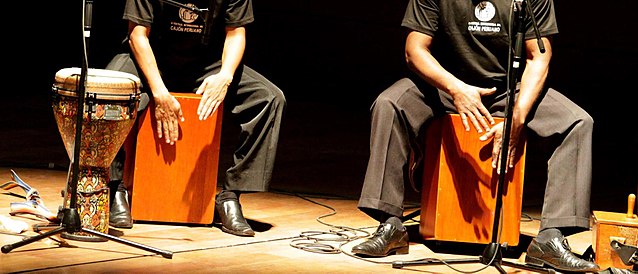Barrios Altos, La Victoria, and Malambo are Lima’s main historical Afro-Peruvian neighborhoods. It’s in these areas where the callejones can be found. In those same narrow streets is where people often gather in the evenings around a guitar and the popular Afro-Peruvian cajón, a box-shaped percussion instrument.
These historically Black Peruvian neighborhoods have an important place in the South American country’s collective imagination due to the rhythms and the tunes that originated there. The story goes that it is where the Afro-Peruvian cajón also has its roots.
In fact, the cajón was created by enslaved Africans during the first three decades of the country’s republic. As a way to emulate African drums, Afro-Peruvians used the wooden crates often used to transport merchandise, as a percussion instrument, using them in their sacred rites and in their different artistic manifestations.
Since then, the cajón has become one of the most important Afro-Peruvian identity symbols, even to this day.
El Festejo is one of the most popular Afro-Peruvian rhythms that uses the cajón. The traditional El Festejo is danced in homes and on the streets of coastal towns, especially in Cañete, Chincha, Pisco, Ica and Nazca, where it is performed only to the rhythm of the cajones, just as enslaved Black men and women danced.
“Peru has an “official history” that excludes Afro-Peruvians from their country’s past. There is also a lack of recognition of their contribution. In the case of the cajon this contribution is clear, convincing and indisputable. The cajon is a real and vital element in the resistance of Afro-Peruvians,” Rafael Santa Cruz told Andina, a Peruvian media outlet.
Santa Cruz was one of the most prominent Afro-Peruvian actors and musicians. He died in 2014 at the age of 53.
In 2001, the cajón was officially recognized in Peru as a “Cultural Heritage of the Nation.”
